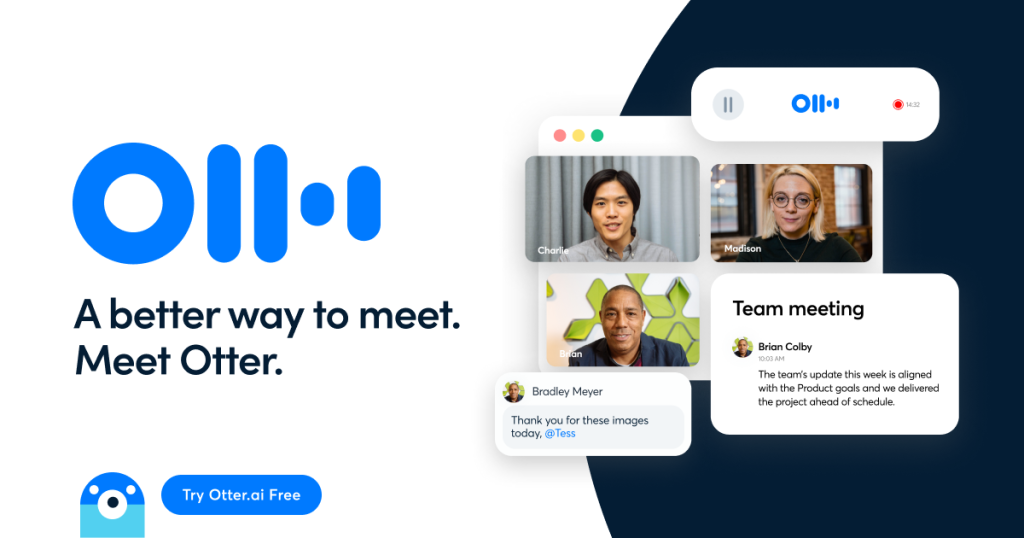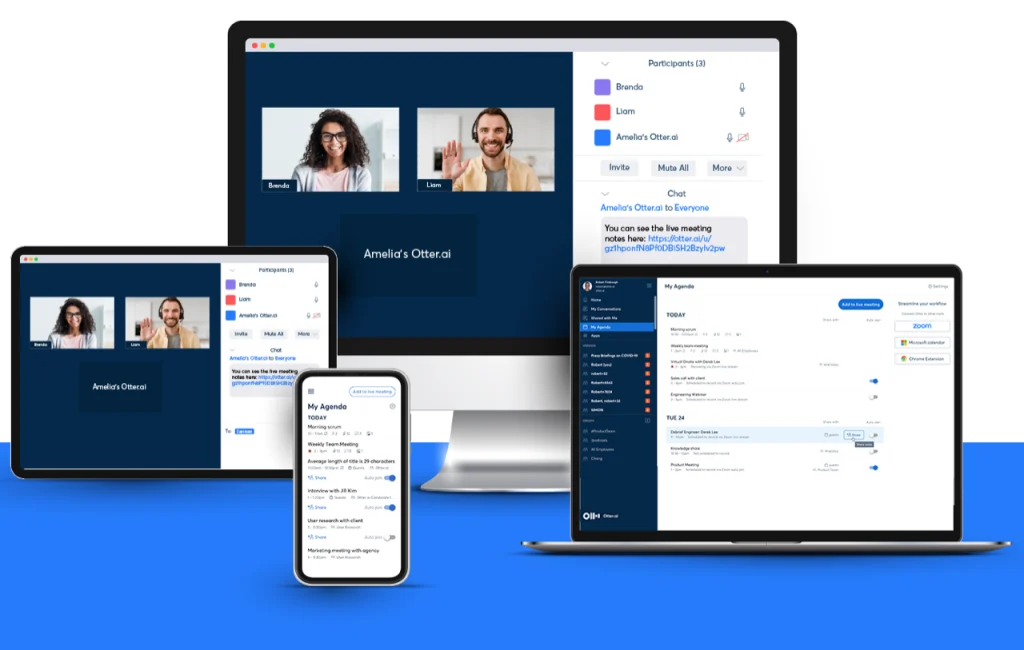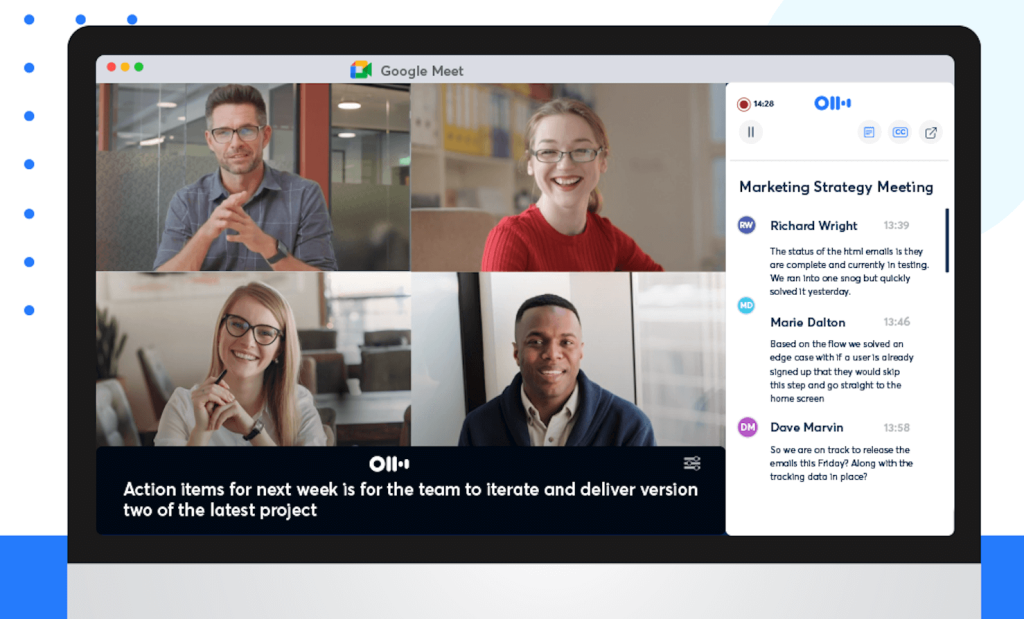
Revolutionizing Transcription and Note-Taking with AI and Accessibility
Otter.ai is a transcription and note-taking platform using artificial intelligence (AI) to transcribe spoken content into written text automatically. It makes it easier for individuals and businesses to capture and organize spoken information during meetings, interviews, lectures, and other verbal interactions.
When I first encountered Otter.ai and began using it for UX research, I was thoroughly impressed by how it streamlined and improved my research processes. It seamlessly transcribed usability testing sessions, facilitating the accurate capture of user feedback, comments, and observations. This product saved considerable time and effort and allowed me to concentrate on in-depth content analysis. Beyond its transcription prowess, it also played a pivotal role in enhancing collaboration and fostering an efficient research environment, enabling researchers to share transcriptions and notes effortlessly. Impressed by the product, I chose to delve deeply into the functionalities and explore the implications of Otter.ai across various aspects. In this post, I will address Otter.ai’s accessible features, explore its core technologies, and examine its social implications and future potential.

Otter.ai possesses accessible features encompassing Utility, Accessibility, Affordability, and Compatibility. Firstly, Otter.ai fulfills real user needs primarily by providing utility through its precise speech-to-text transcription feature, which is invaluable for professionals, students, journalists, and individuals who frequently participate in meetings, interviews, or lectures.
Its core function of transforming spoken language into text addresses the accessibility needs of individuals with hearing impairments, granting them access to spoken content. Otter.ai offers voice commands for easy navigation and control, catering to users with mobility impairments. It enhances navigation and comprehension for users with visual impairments by providing customizable transcriptions, including speaker labels and timestamps.
Otter.ai prioritizes affordability as well. It offers a range of free and paid plans, making it accessible to a diverse user base, including individuals and businesses, with varying feature and usage requirements.
Finally, Otter.ai underscores its compatibility by offering both web and mobile applications. This flexibility guarantees that users can conveniently access their transcriptions and notes while traveling. In addition to its device compatibility, Otter.ai integrates with productivity tools like Zoom and Google Workspace, streamlining seamless workflow integration and enhancing the user experience.

Speaking of Otter.ai’s technology stack, three key technologies stand out: Automatic Speech Recognition (ASR), Natural Language Processing (NLP), and Machine Learning (ML). ASR, the foundational technology, analyzes audio recordings, identifies words and phrases, and converts spoken language into written text. NLP algorithms further refine this process, ensuring accurate identification and formatting of text from spoken words, ultimately enhancing transcription precision and contextual comprehension. ML models come into play by training the ASR system, enabling it to evolve and sharpen its transcription accuracy over time, learning from user feedback and interactions. Aside from these, Otter.ai utilizes voice recognition, API integration, and encryption technologies to ensure data security and accessibility features like screen reading and voice command recognition.
Using AI and machine learning, Otter.ai’s innovative solution enhances various aspects of society, providing a valuable tool for efficient remote collaboration in post-pandemic and aiding people with impairments in education, communication, and work. Above and beyond, its future impact is poised to extend its influence across multiple sectors, from accessibility and productivity to education and beyond.
As Otter.ai’s AI technologies continue to advance, I anticipate their applications extending beyond transcription services, encompassing areas such as voice assistants and natural language understanding. This evolution will also contribute to expediting data analysis and insights generation, potentially driving progress in research across diverse fields.
I envision a positive future where Otter.ai further enhances accessibility for individuals with hearing impairments, mobility limitations, and visual impairments. Furthermore, I eagerly anticipate Otter.ai expanding its language support to serve a more diverse global user base, thereby broadening its influence and reach and its commitment to inclusivity, poising to impact education, communication, and work environments soon substantially.

Reference:
What are some types of assistive devices and how are they used? NICHD News, 10.24.2018
I wrote the book on user-friendly design. What I see today horrifies me, Don Norman, 5.08.2019
Lydia X.Z. Brown’s Ableist words and terms to avoid
What is an accessible product? e-Accessibility Policy Toolkit for Persons with Disabilities, Dr. Sam Walker
Otter.ai
Otter AI Review 2023 (Transcription Features, Pricing, Pros & Cons), Christopher Morris, 8.29.2023